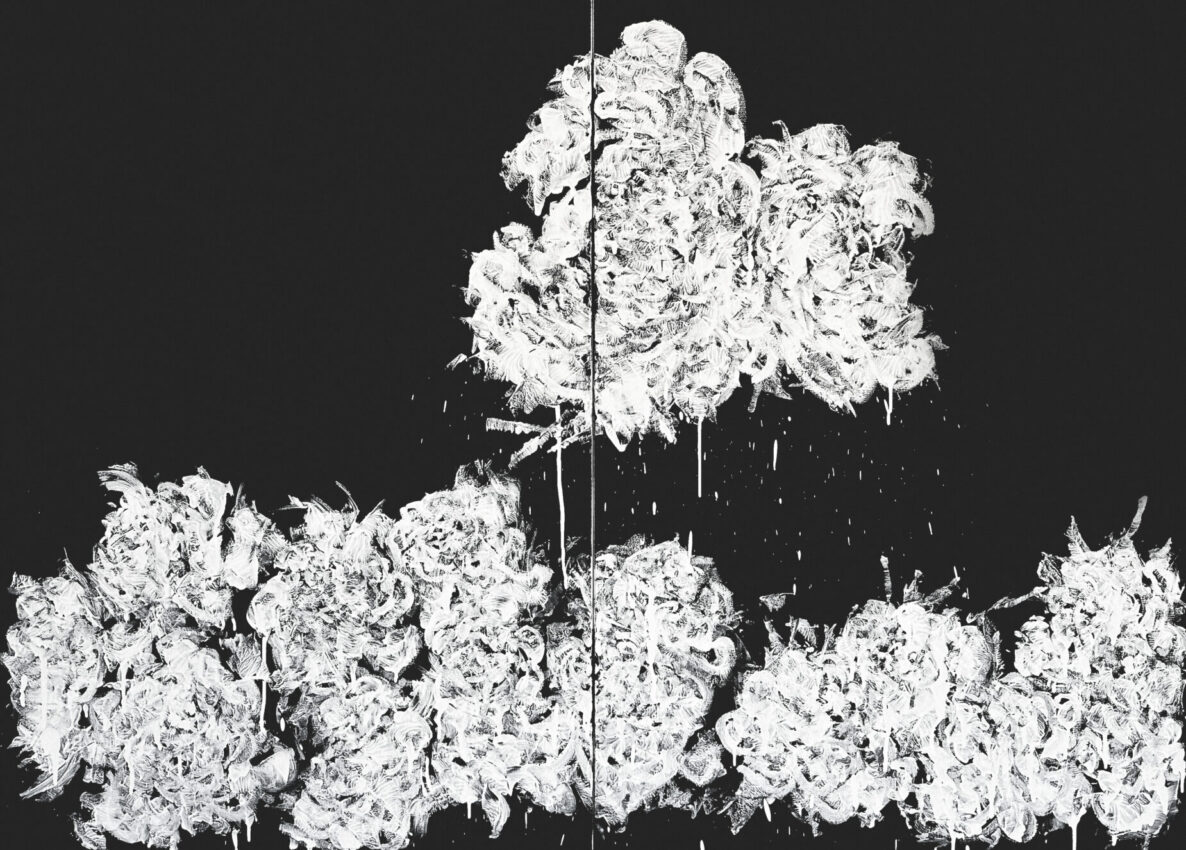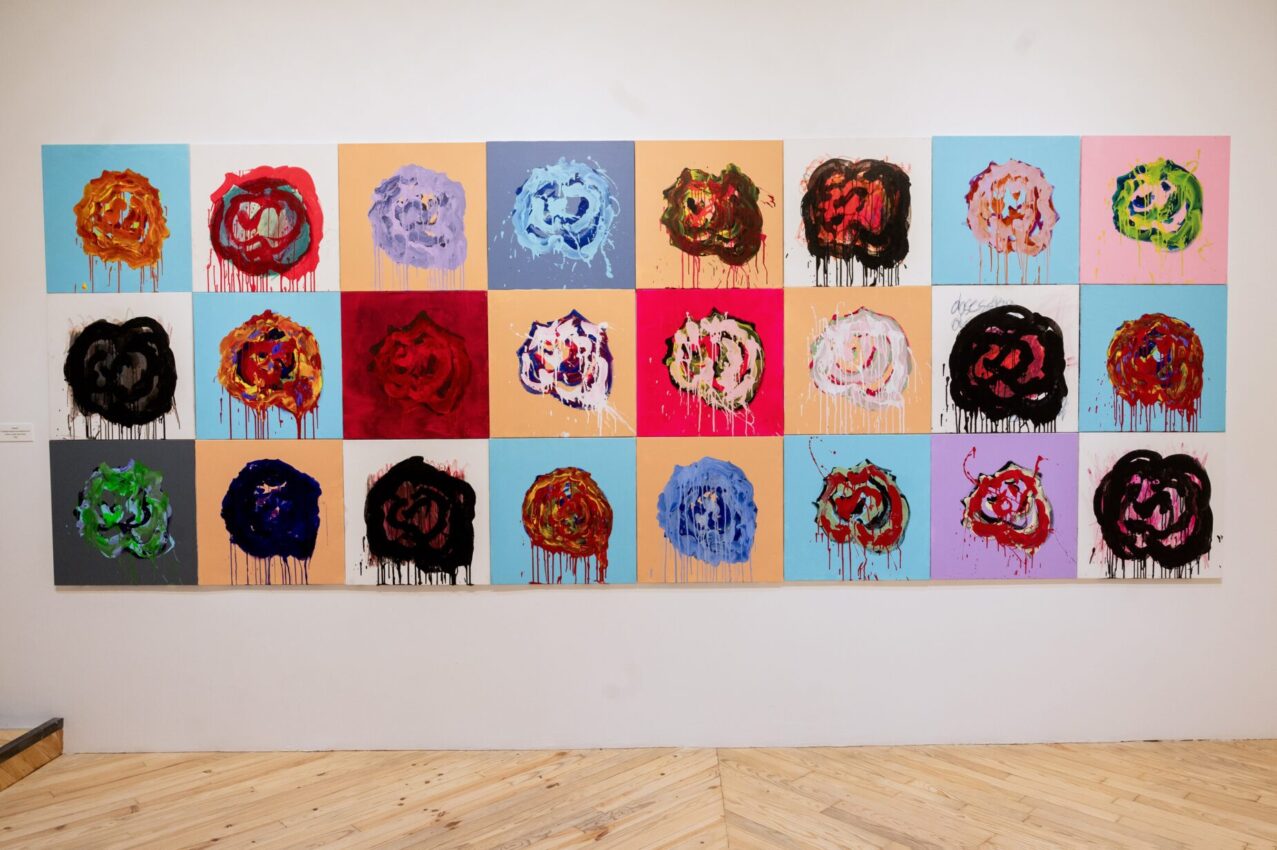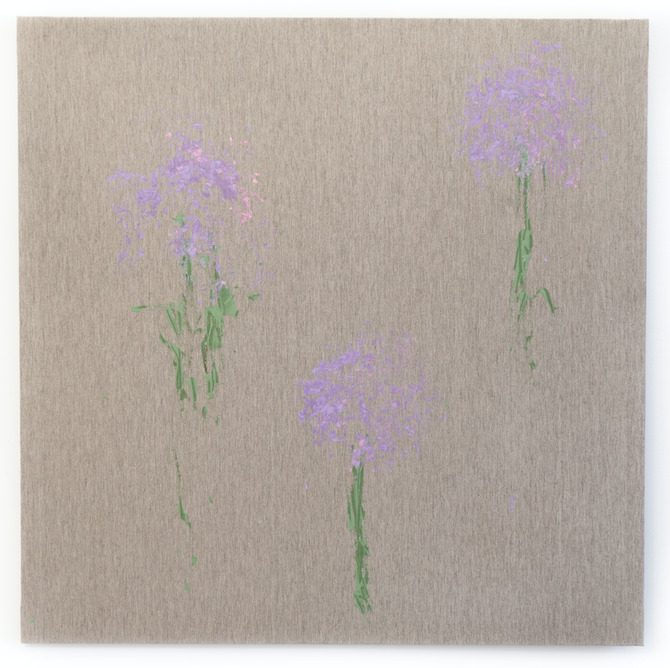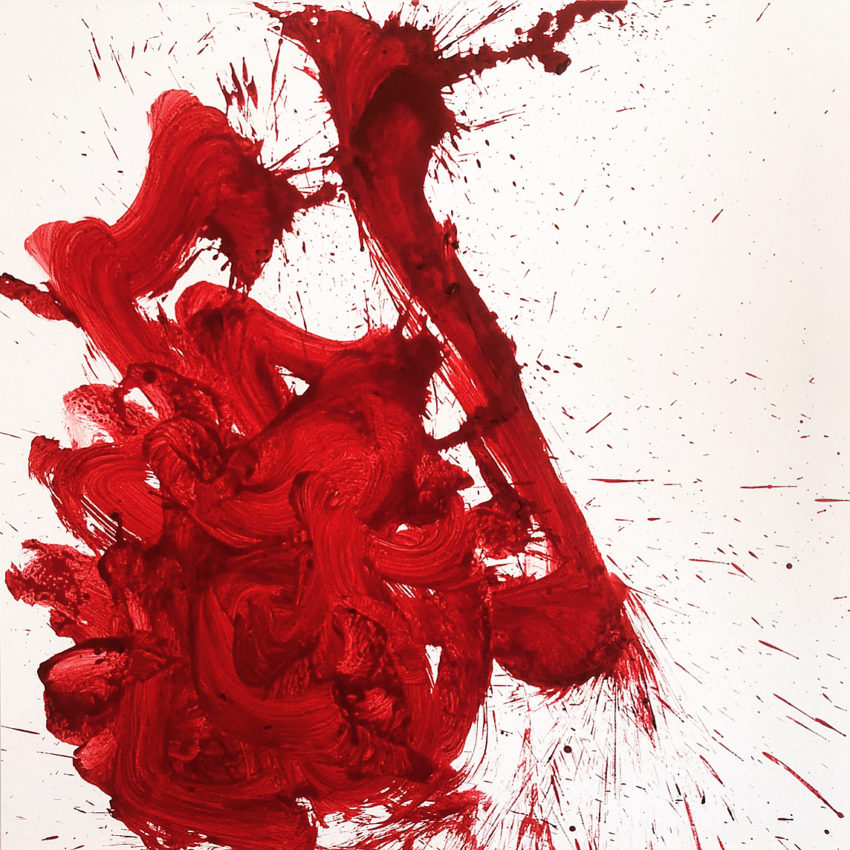Resilient Bloom
What is good and what is evil? In today’s increasingly polarized global society, people are often forced to take sides, leading to a persistent moral dilemma rooted not in universal truths, but in personal values. Many seek to assert their own goodness—often publicly—as a way to reject or deny their potential for wrongdoing. However, this moral stance can become a philosophical trap. Fundamental questions then arise: Does a truly good or evil person exist? Can an entire nation be labeled as good or bad?
Contemporary society is saturated with moralistic behaviors and hypocritical judgments, fueling an instinctive urge to categorize others. The artist, however, challenges these imposed moral codes. During his formative years in Japan, he was drawn to underground culture and formed connections with individuals marginalized by mainstream norms. These encounters revealed the complexity of morality: acts of kindness among those deemed “bad,” and cruelty among those seen as “good.” From these experiences, the artist discovered a fragile and shifting line between both extremes. Good and evil are not fixed states—they are fluid, shaped by context and environment.
Now based in Madrid, the artist navigates life as a Japanese person, constantly confronting the tension of existing on the margins of moral and cultural judgment. These experiences fuel a deep moral frustration, as well as a search for reconciliation between social expectations and his personal truth. Through this journey, he reconnects with the underground subcultures of his youth, particularly traditional Japanese tattooing, which he embraces as a symbol of moral resistance and personal identity.
The chrysanthemum, a common motif in traditional Japanese tattooing, has become a central symbol in his work. In his black-and-white paintings, the flower emerges as an abstract expression of his inner conflict: its delicate form evokes the blurred boundary between good and evil. Through this visual language, the artist invites viewers to question the instability of moral binaries. Ultimately, the chrysanthemum represents not only duality but also a means of healing—a way to express that nothing is inherently good or bad.
Obsession
Obsession manifests through an incalculable number of roses, painted both with a calligraphy brush and real roses. The repetitive depiction of the same flower in nearly identical forms symbolizes obsession itself—an intense, relentless attraction toward something. The artist meticulously renders these roses in a minimalist manner, using both a calligraphy brush and real roses as mediums to channel an inner, impulsive desire. Each piece in this series explores a different combination of colors and techniques, capturing the complex spectrum of inner experiences often reduced to a single term: obsession.
While the act of painting the same shape over and over may initially seem senseless or empty, it gains meaning through repetition, challenging conventional notions of painting. Here, the process itself is the concept—the act of practicing obsession becomes its own expression. Unlike traditional painting, where each stroke plays a distinct role in composition, every element of this series holds equal importance, meaning, and form.
The contrast between the aesthetic beauty of the imagery and the uneasy, often unsettling theme creates an internal dilemma for the viewer—drawing them in while forcing them to confront the discomfort of obsession.
Neo-Japonism
In this series, the artist aims to visualize haikus, the world's briefest form of poetry, to capture the experiences of perceiving the ephemeral beauty of flowers in spring in Japan based on personal encounters. It is a combination of Japanese poetic expression, minimalist aesthetics, and contemporary art. Neo-Japonism is a cultural advocacy that reinterprets Japanese culture in the context of globalization by Japanese artists, with the goal of proposing novel ways to present Japanese culture to the global society. Nowadays, Japanese culture has significant impacts on creations in Western countries, where numerous artists draw inspiration from Japanese culture. Through this, the artist seeks to foster a dialogue between Western and Japanese societies, challenging our perceptions of cultural appreciation and consumption.
Drawing inspiration from both 19th and early 20th-century Japonism and 21st-century contemporary art, Masaaki Hasegawa, a Japanese artist based in Spain, proposes an alternative approach to appreciate and interpret Japanese culture.
In this series, blank space takes center stage in expression, reflecting the essence of Japanese aesthetics. For instance, in works combining different colored squares in black and white flower compositions, observers are invited to complete the artwork by imagining colors in the blank areas, relying on the colors of the squares. By intentionally leaving additional information, such as specific locations or background elements, blank, an abstract expression is achieved where beauty exists not in reality but only in the viewer's mind.
Naturism
Naturism
Naturism is a word coined by Masaaki Hasegawa to express the idea of a nature-centered approach to art. It places humans not in the center but considers them simply as an element of nature, and sees art as a phenomenon in the ecosystem. It challenges one of the most critical human values: the idea that humanity is the most valuable existence in the world.
Currently, human-related activities have huge impacts on the earth, but this does not mean that humans are the most precious and valuable existence on the planet or in the universe. Naturism doubts and questions our position, value, and role in this world, and nature-centralism leads us to redefine the relationship between nature, humans, and art.
In the context of art, this means we can modify our perspective of reality. The traditional perspective—humans as the center of the world—is replaced by another perspective to redefine our relationship with the outer world. It aims to disrupt the unconscious hierarchy that humans have created and place them as an element within and of the world.
Documentation of experience as artwork
The role of artwork in Naturism is the documentation of interactions between the artist and nature. The idea comes from the concept of haiku from Japan, which is the shortest format of poetry in the world. The main role of haiku is not to create beautiful poems but to document the experience of the beauty of nature. Having beautiful haiku is a result of experiencing beauty in nature. It is merely a consequence and not the objective. First, there is an experience of feeling the beauty of nature, and second, haiku intends to document it.
A-B-S-T-R-A-C-T
This series visualizes human emotions that are not readily captured by words. It challenges the linguistic perception of one’s self and is an attempt to label the phenomena of the human mind.
Through the creation process, it tries to reduce the amount of “conscious intensity” the human attempt to make something perfect in order to extract unconsciousness, which can handle far more information and enables access to the essence of human experiences.
Seeing humanity as a small part of the universe that partially experiences universal phenomena, the creation process tries to incorporate the essence of nature/universe in an attempt to convert inorganic materials into organic being.

Sound Of Colors-colors dance and make the sound of music. When you are hearing the sound of colors, you don’t need to think of the composition because they tell you where they would like to be. The music exists because we dance. Art exists because we create. Colors exist not in objects but in your mind. This is the end of art theory and the beginning of human being. Art exists for us. It’s not that we exist for art and it’s theories. Everything starts with the perception and so we need to feel first.
Metamorphosis
Masaaki's work attempts to resolve the profound gap between the understanding of feelings and their logical, verbal explanation. The artist's personal life combined with his powerful sensitivity makes him capable of translating his synaesthetic experiences into paintings of an expressionist character. His gesture, at the same time fleeting and forceful, together with his knowledge of various languages, allows him to express in a fluid way his main concerns about life, human relationships, his feelings in contrast with the context he chooses and inhabits.
On this occasion, with his series "metamorphosis" he takes a logical step in which he intends to transfer in a more evident way the capacity given to the spectator to close the meaning of the work, assuming that without the work that corresponds to the spectator to feel through his observation the work would never be complete.
Masaaki proposes again, this time using a Japanese calligraphy brush and only the combination of three colors: black, white, and red, a game of perception that invites the spectator to "fill" the emptiness with his experience of what he has lived. A dance to which the word, once again, arrives late...
Reuse
By employing different discarded materials, this series asks society: “What is value?”
This series converts trash that is economically worthless into artwork. It pushes the boundaries of painting to create a unique visual impression that aims to change the perception of the audience. In society, everything has a price, but it often fluctuates. It does not necessarily reflect society’s needs and demands, nor does it reflect measurable functionality.
Today, even art has become a commodity — an investment in future gains with the expectation of an increase in price. However, nobody can define what art is truly valuable as nobody can define the true value of art.
A Dialogue With Nature
From the COVID-19 pandemic, wildfires in Australia, and Typhoon Haishen to extreme heat in California, flooding in Jakarta, and the earthquake in Alaska, 2020 has been a year filled with natural disasters. We have been forced to re-think our relationship with nature and realize how vulnerable we are when confronted by Mother Nature. Though we have technology that allows us to live in such a comfortable and safe world, these natural disasters have shown us that humans have been overconfident in themselves. It is time for us to change the way we think about nature, from “how to control nature” to “how to live with nature.” For a long time, humans have thought that we are superior to other animals and living beings. Human-developed technology has led us to think that we are in a position to control nature. Just as it is important to listen to others in order to understand them better and develop better relationships, it is necessary to listen to what nature tells us. It is time for us to have a dialogue with nature.
This artwork consists of two colors: red and white, which represent the artist’s origin: Japan. Throughout Japan’s history, the fundamental philosophy of life has always been to “live with nature.” While the Western world’s focus has been on dominating nature, including the domestication of animals and overcoming natural limitations such as gravity, the Japanese approach has been co-living with nature. As it is globally known, Japan has had to deal with many kinds of natural disasters: typhoons, earthquakes, volcanoes, and tsunamis. So, Japan has cultivated a way of thinking about how to co-exist with nature, rather than controlling it. Therefore, the principal colors of the artwork represent the importance of communication with nature, rather than controlling nature. It is important to emphasize that this has nothing to do with nationalism, but is about bringing an Eastern philosophy on nature to the Western world in order to change the way we deal with nature.
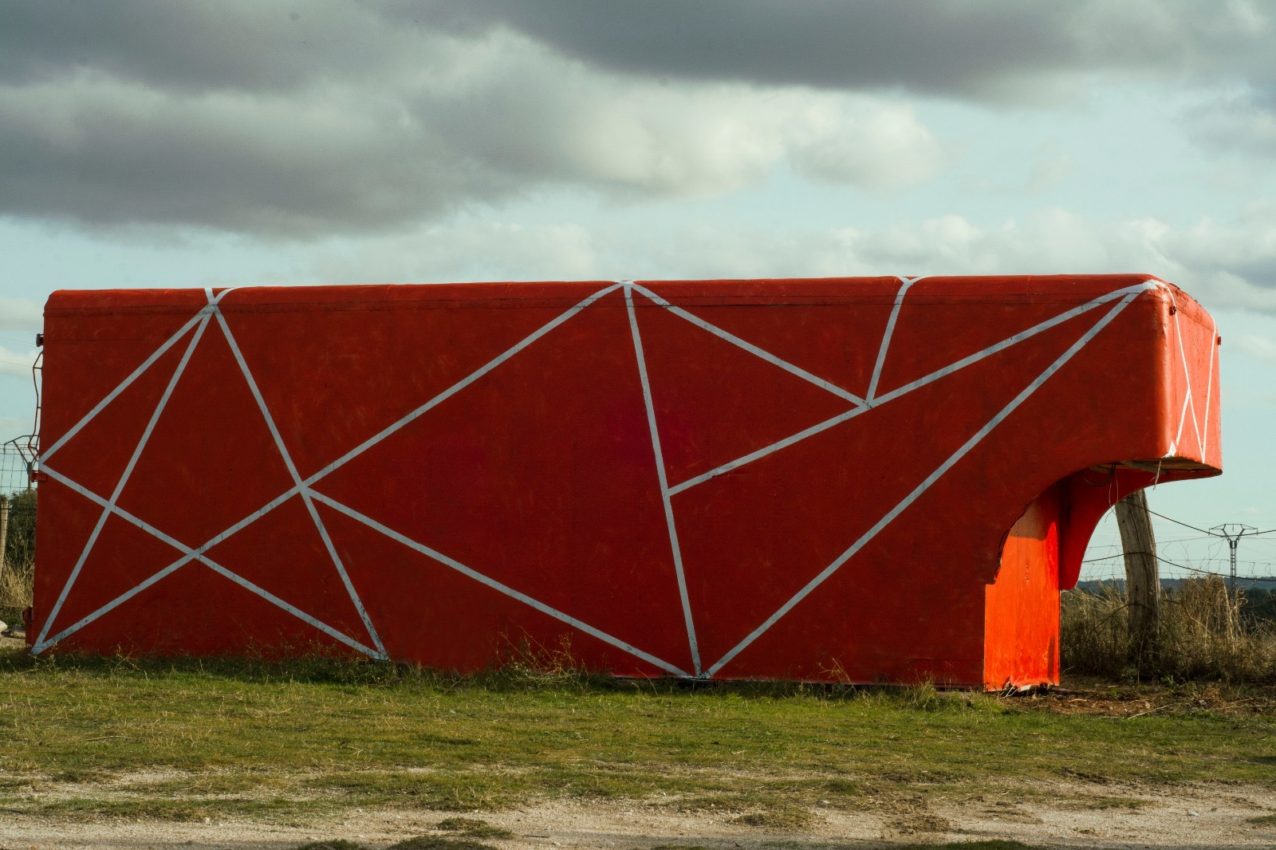
From a contemporary art perspective, the value of this artwork is embedded in the context and environment of its creation. By placing the artwork in the middle of nowhere, far away from a city center, it creates a clear and strong contrast between nature and human development. By using a ready-made object—a container that has enabled humans to accelerate the transportation of goods such as livestock and commercial products—it raises a hairy question: “Is art truly meaningful or merely a manifestation of the human ego?” There is a premise in the art world that art is meaningful and valuable for humanity. However, if we change the perspective from human-centered to nature-centered, it is obvious that humans are just a small part of nature. So, there is a radical and fundamental question of whether human creation is truly meaningful and valuable to nature. For the audience, this artwork is a means to deliver a message to change the way we engage with nature. However, from the perspective of a practicing contemporary artist, this artwork serves to challenge the basic premise and consensus of art itself and generate a disruptive shift in the way we think about ourselves.
Public Artworks
Artwork is made as a catalyst to connect spaces with the universe. It serves as a door to an unknown reality and makes the invisible visible.
This series aims to produce catalysts to connect people beyond borders such as nationality, language, generation, religion, and gender. Its prime purpose is the exploration of ways in which art can contribute to global society and partially solve global issues and problems, rather than focusing on its economic value and role in the marketplace.
This series challenges the idea that artworks are merely tradable merchandise and posits that its pure purpose can be of service to society.
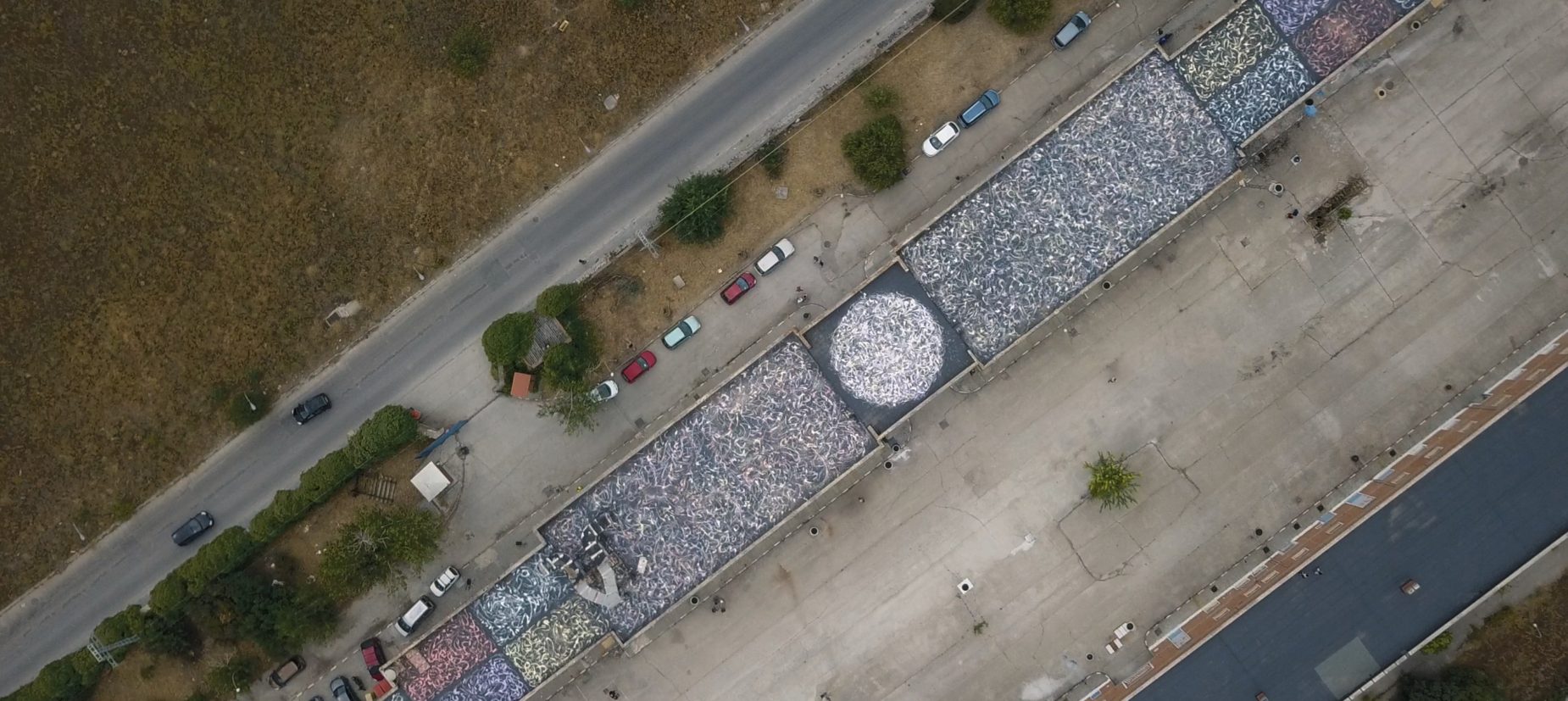
This artwork is the biggest calligraphic artwork in Europe (1926 sq meters) and was created on the rooftop of the Zapadores Museum.
The artwork represents the transition from the chaotic and unorganized world to the organized but united world where people can respect others having different cultures and backgrounds.
The enormous size represents how it is important to open your mind and accept others to connect us beyond borders and realize a truly peaceful world.
Cho Cho~Renaissance /Abstract Flowers
A collaboration with Maria Lafuente, one of the most innovative fashion designers for the Madrid Fashion Week. Referring to abstract expressionism and Japanese calligraphy, this series presents a different dimension of abstract expressionism in the context of globalization of culture. It is a process of disrupting what is established and developing a new structure in chaos. Using a Japanese calligraphy brush allows him to create pieces that cannot be done with fine art brushes to demonstrate new possibilities of abstract expressionism. The work looks like action-painting but you can tell it is very different from Western art in the details and also its use of space inspired by Japanese calligraphy. The work captures the movement of the brush which is controlled and the painting which is more chaotic, like the dynamic movements of nature.
